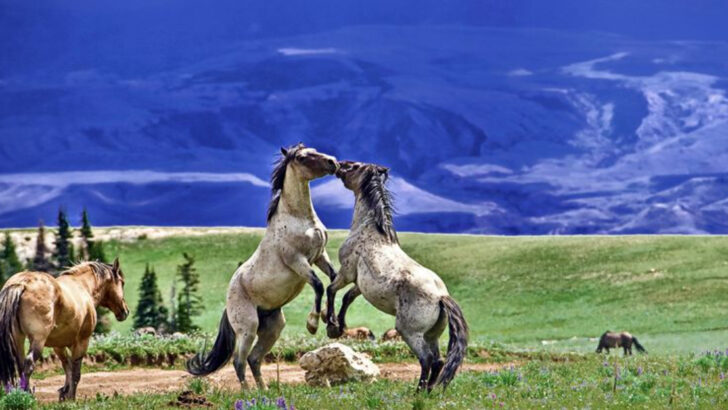Wyoming’s wild horses are icons of unbridled freedom.
They thunder across endless plains with raw power and breathtaking grace, turning rugged lands into living canvases of wild spirit. Each gallop speaks of ancient survival and the unyielding quest for freedom.
Imagine a herd racing under endless blue skies, manes whipping like banners of rebellion. Every stride writes a story of fierce independence, echoing the heartbeat of untamed wilderness. These horses carry secrets of endurance and deep bonds, making every encounter a vivid glimpse into nature’s wild soul.
Prepare to uncover 15 fascinating details about the lives of these remarkable creatures. Discover tales of daily battles, unexpected moments, and enduring loyalty that define their legendary existence. Let the untamed saga of Wyoming’s wild horses ignite your sense of adventure and remind you that true freedom rides on four hooves.
Social Structure of Herds
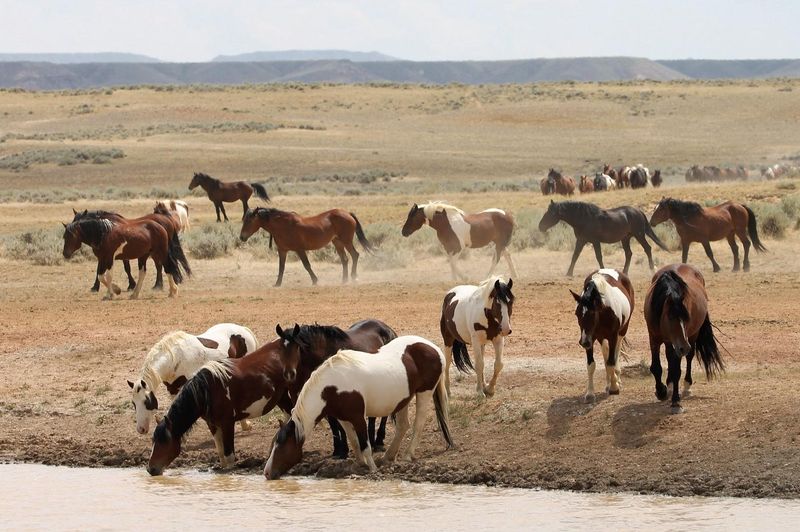
Wild horses in Wyoming organize themselves into complex social structures known as bands. Each band typically includes one dominant stallion, several mares, and their offspring. This hierarchy is crucial for maintaining order and protecting the group from threats.
The stallion plays a pivotal role, leading and defending the herd while ensuring the safety of mares and foals. Mares, on the other hand, are responsible for nurturing the young and maintaining social bonds.
These familial groups are dynamic, with members often shifting between bands, showcasing the adaptive nature of these majestic creatures.
Adaptation to Harsh Environments
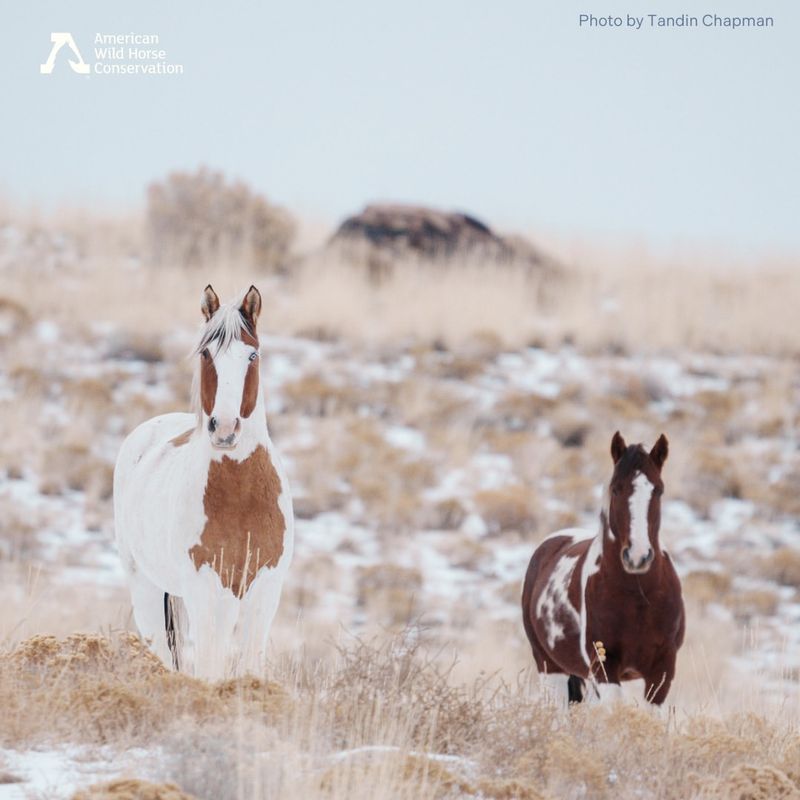
Wyoming’s wild horses are masters of adaptation, thriving in the state’s diverse and often harsh landscapes. They endure freezing winters and scorching summers, finding sustenance in sparse vegetation.
Their ability to extract nutrients from tough grasses and shrubs is remarkable, ensuring their survival in environments where other species might struggle.
Additionally, their thick winter coats and agile movements across rugged terrain help them withstand the challenging conditions. This resilience is a testament to their enduring spirit and ability to navigate the extremes of the natural world.
Historical Significance
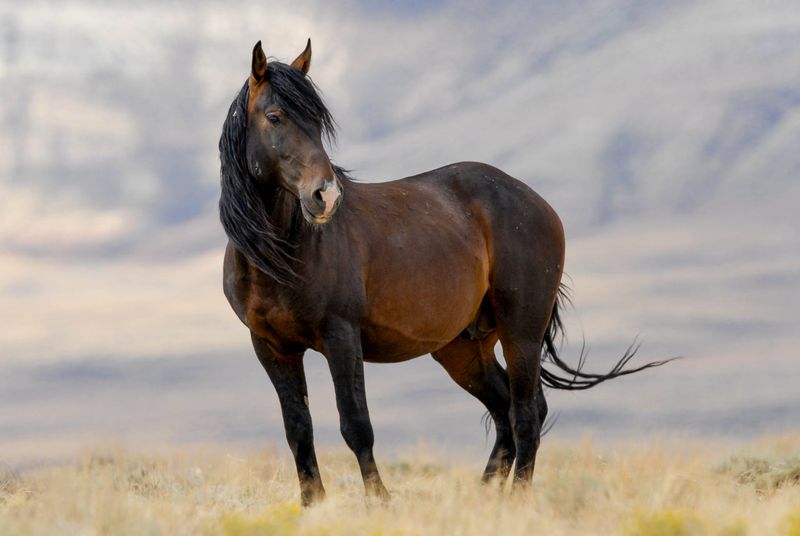
The history of Wyoming’s wild horses is as rich as it is fascinating. These animals are descendants of Spanish horses brought to North America in the 16th century. Over centuries, they became integral to the culture and history of the American West.
Their presence across the vast landscapes of Wyoming is a living reminder of the past, symbolizing freedom and the untamed spirit of the frontier.
As such, they have captured the imaginations of artists, writers, and historians, leaving an indelible mark on the cultural landscape of the region.
Threats From Predators
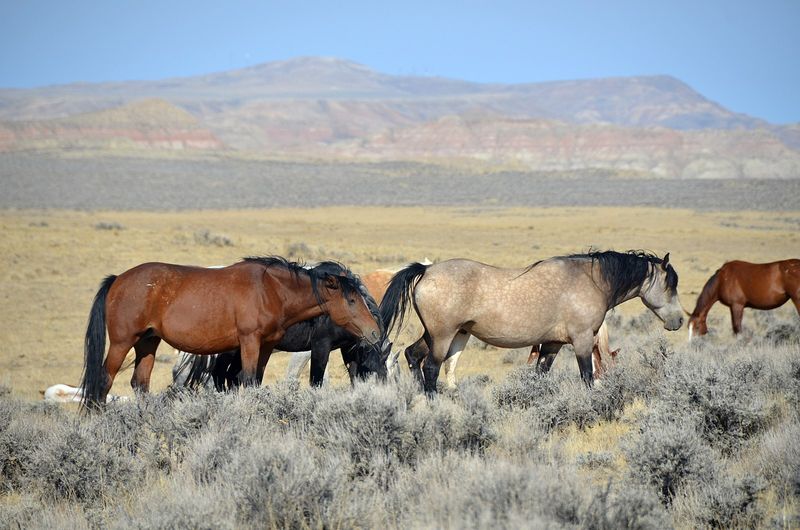
While wild horses in Wyoming face various threats, predators such as wolves and mountain lions pose a significant danger, especially to foals and weaker members of the herd.
The stallion’s role is critical in protecting the herd from these predators, utilizing strength and strategy to ward off attacks.
Vigilance is key, as these predators are cunning and opportunistic. By staying alert and maintaining strong group cohesion, wild horses enhance their chances of survival, showcasing the constant battle for existence in the wild.
Migration Patterns
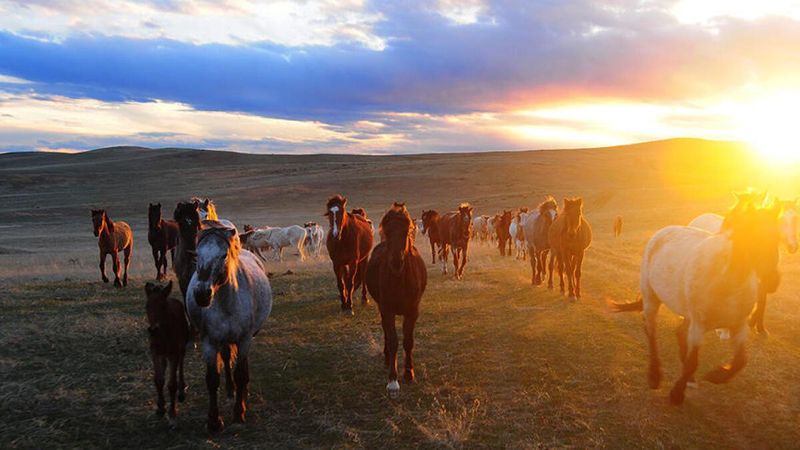
Migration is a crucial aspect of life for Wyoming’s wild horses. These movements are often driven by the search for food and water, especially during seasonal changes that impact resource availability.
The horses follow ancient routes, passed down through generations, that guide them to vital resources.
This migratory behavior not only ensures their survival but also highlights their deep connection to the land. Understanding these patterns is essential for conservation efforts, as it helps protect their habitats and support sustainable populations.
Role in Ecosystem
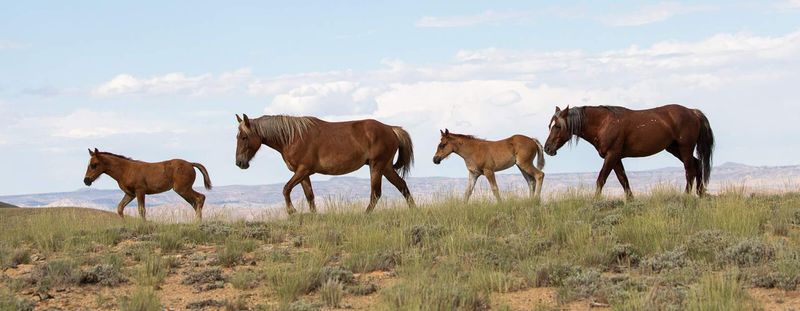
Wild horses play a significant role in Wyoming’s ecosystems. By grazing on grasses and shrubs, they help maintain a balance in vegetation, which supports other wildlife species.
Their grazing patterns can influence plant biodiversity, promoting the growth of certain plant species.
Additionally, their presence aids in seed dispersal, contributing to the health of the ecosystem. This ecological impact underscores their importance beyond their aesthetic appeal, highlighting their role as integral components of the natural environment they inhabit.
Genetic Diversity
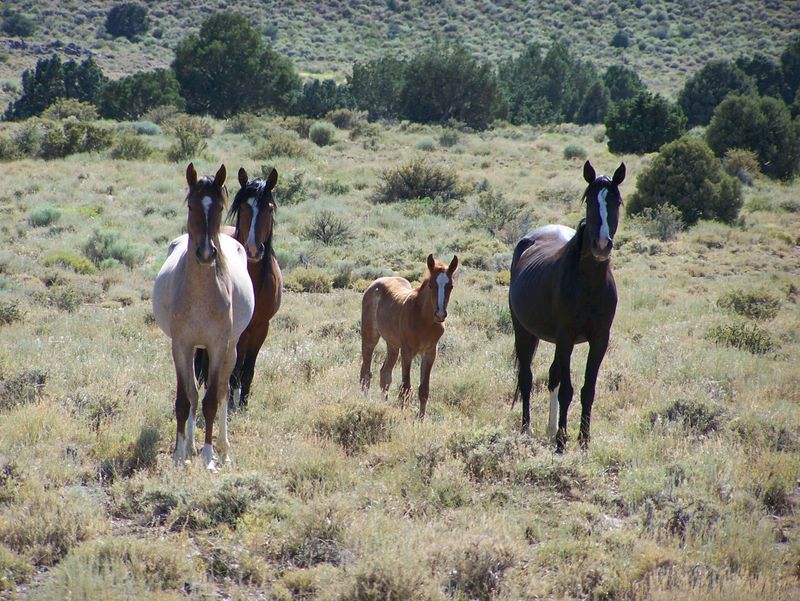
The genetic diversity of Wyoming’s wild horses is a subject of study and admiration. This diversity is crucial for the health and resilience of populations, allowing them to adapt to environmental changes.
Different coat colors, sizes, and traits are observed, showcasing the varied genetic makeup of these animals.
Efforts to maintain this diversity are vital for conservation, ensuring that these horses can thrive amidst the challenges they face. Such diversity is a testament to their adaptability and enduring presence in the wild.
Water Sources and Survival
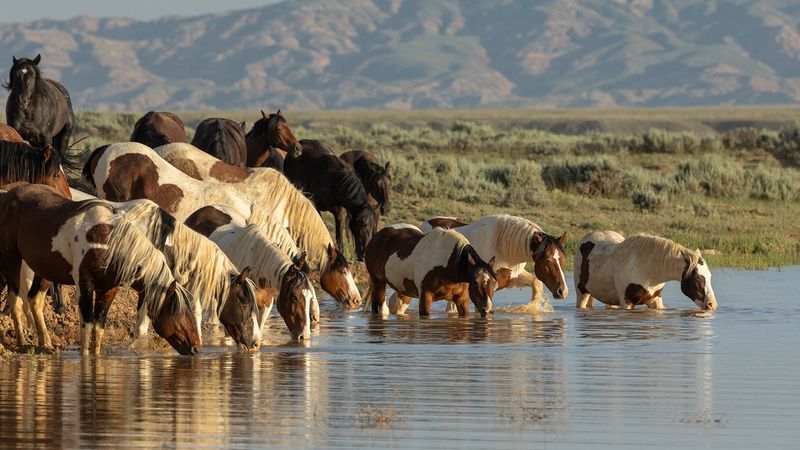
Access to water is a critical factor for the survival of wild horses in Wyoming. These animals often travel great distances to find reliable water sources, such as springs, rivers, and lakes.
The availability of water influences their migratory patterns and overall health. During dry spells, competition for water can be fierce, highlighting the challenges they face in maintaining hydration.
Conservation efforts focus on preserving these vital resources, ensuring that wild horses continue to survive and thrive in their natural habitats.
Communication Methods
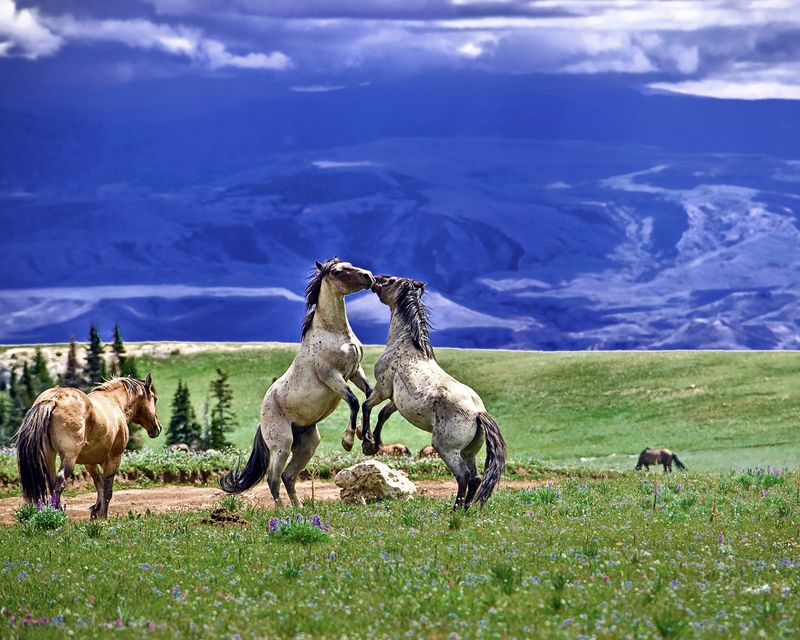
Communication among wild horses is a fascinating aspect of their social behavior. They utilize a variety of methods, including vocalizations such as whinnies and neighs, as well as body language cues like ear positioning and tail movements.
These signals help convey emotions, intentions, and warnings to other members of the herd.
Understanding this language is crucial for researchers studying their behavior, as it provides insights into their social interactions and group dynamics. This intricate communication system is a testament to their intelligence and social complexity.
Foaling Seasons
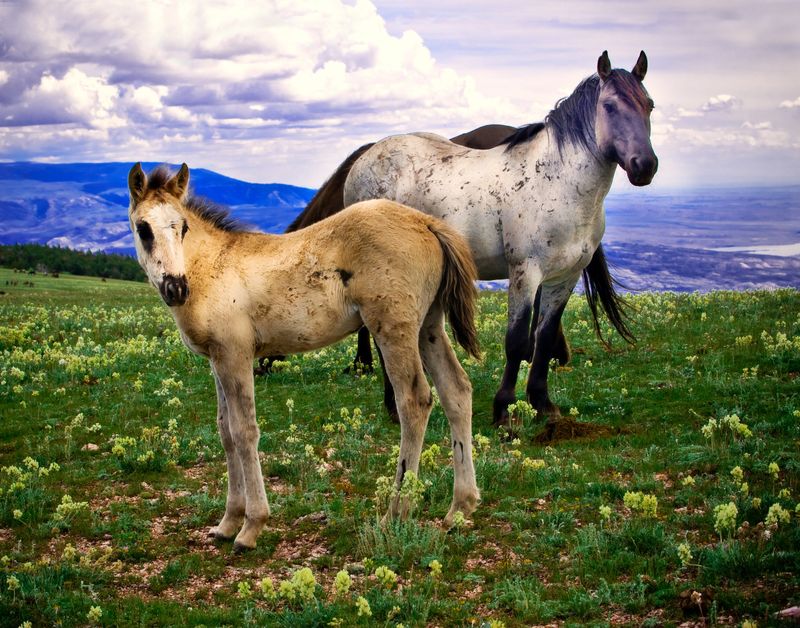
Spring is a time of renewal and birth for Wyoming’s wild horses. Foaling seasons occur during this time, when mares give birth to their young.
These seasons are carefully timed to coincide with the abundance of food and milder weather, providing optimal conditions for the growth and development of foals.
The bonds formed between mares and their foals are deeply nurturing, ensuring the young horses receive the care and protection they need to survive and eventually integrate into the herd.
Human Interactions
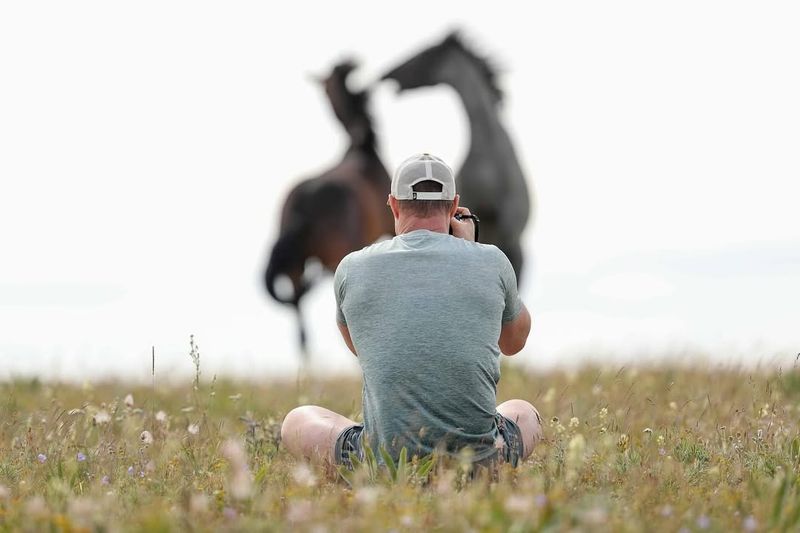
Human interactions with wild horses in Wyoming are varied and complex. While some people admire and protect them, others see them as competition for resources with livestock.
Conservationists work tirelessly to ensure these animals are protected, balancing human interests with the needs of the horses.
This delicate relationship requires ongoing dialogue and cooperation to maintain the natural balance and preserve the legacy of these iconic animals. Such efforts highlight the challenges and opportunities in coexisting with these magnificent creatures.
Conservation Challenges
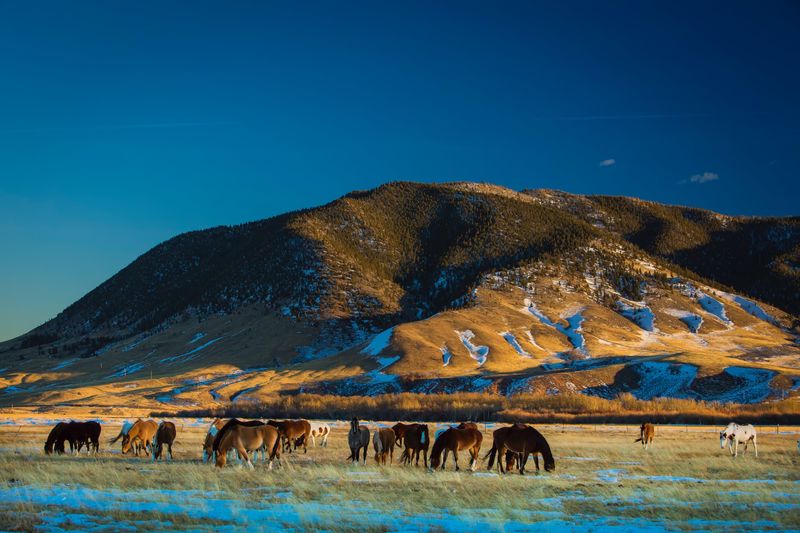
Conservation of wild horses in Wyoming faces numerous challenges. Issues like habitat loss, climate change, and human encroachment threaten their survival.
Efforts by conservation groups focus on protecting habitats, managing populations, and raising awareness about the horses’ plight.
Such initiatives are crucial for ensuring the long-term survival of these animals, demanding collaboration between policymakers, researchers, and local communities. Understanding and mitigating these challenges is essential for maintaining the delicate balance of Wyoming’s ecosystems.
Cultural Impact
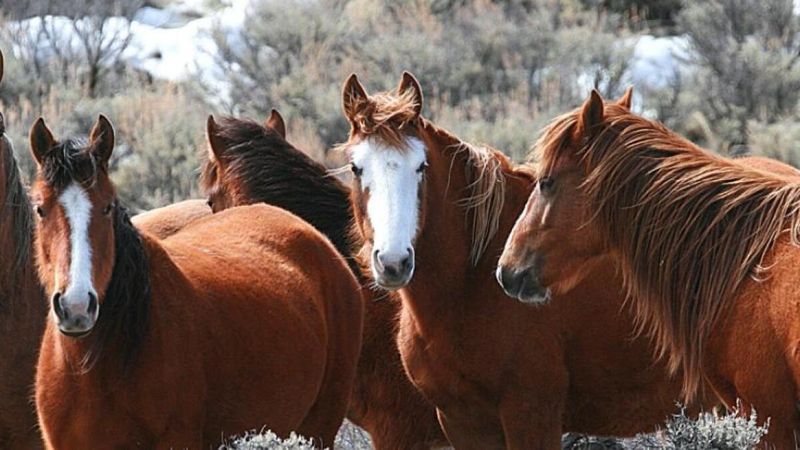
Wyoming’s wild horses have a profound cultural impact, representing freedom, strength, and the spirit of the American West. Their presence in art, literature, and folklore underscores their significance.
These animals inspire countless stories and depictions, resonating with people far beyond the borders of Wyoming.
Their cultural legacy is intertwined with the history of the region, reflecting the enduring bond between humans and these majestic creatures. By celebrating their cultural importance, we ensure that their story continues to captivate future generations.
Aging and Longevity
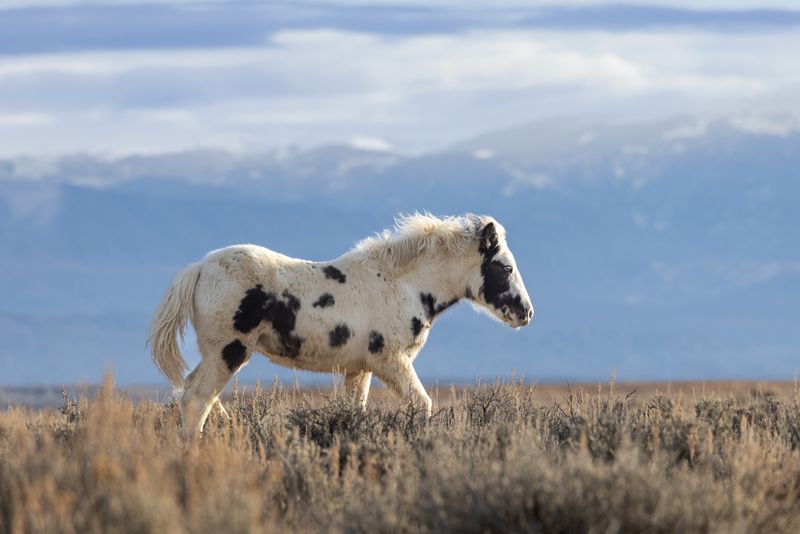
Wild horses in Wyoming can live up to 20-30 years, with their lifespan influenced by factors like diet, environment, and social dynamics.
Aging horses often enjoy a respected status within their groups, their experience and knowledge benefiting the herd.
As they age, they may slow down, but their role remains vital, contributing to the social fabric and stability of the herd. Observing their aging process provides insights into the life cycles and social structures of these remarkable animals.
Impact of Climate Change
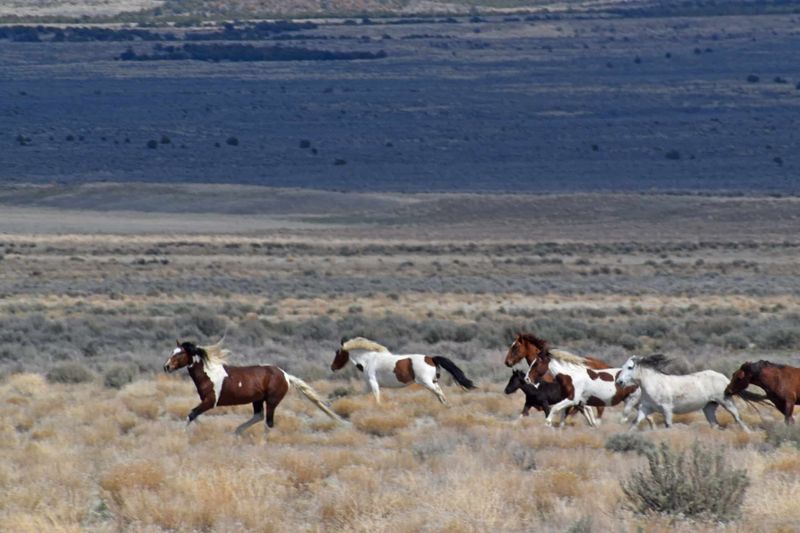
Climate change poses a significant threat to Wyoming’s wild horses, impacting their habitats and food sources. Changes in weather patterns can lead to prolonged droughts, affecting the availability of water and vegetation.
These challenges require the horses to adapt quickly, altering their migratory and social behaviors to survive.
Conservation efforts must address these impacts, focusing on habitat preservation and management practices that mitigate the effects of climate change. By understanding these challenges, we can help ensure the survival of Wyoming’s wild horses for generations to come.

